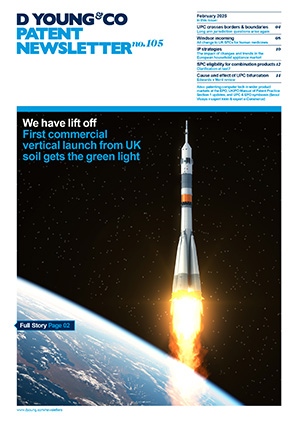Gene-edited organisms classified as GM in the EU: C-528/16
The Court of Justice of the European Union (CJEU) recently decided that organisms that have been subjected to non-“conventional” mutagenesis techniques must be classified as genetically-modified organisms (GMOs).
The Court of Justice of the European Union (CJEU) recently decided that organisms that have been subjected to non-“conventional” mutagenesis techniques must be classified as genetically-modified organisms (GMOs).
This decision has far-reaching implications in that plants engineered using modern directed mutagenesis approaches, such as the CRISPR gene editing technology, are now considered to be GMOs in the EU and thus subject to the associated substantial regulatory burden.
It remains to be seen whether the UK government will continue to follow the same approach following the UK’s departure from the EU.
The technology
This case revolves around the different approaches that can be used to engineer the genomes of organisms, in particular plants.
Conventional techniques for engineering new traits in plants typically involve random mutagenesis of a plant’s genome, for example using ionising radiation or exposure to mutagenic chemicals, followed by laborious screening and selection for a desired characteristic.
Plants can also be genetically engineered using “transgenesis” approaches, which insert exogenous genetic material giving rise to particular characteristics, such as herbicide resistance, into the plant’s genome. However, more recent developments have made it possible to engineer mutations in a precisely targeted manner, which was not previously achievable. Precise targeting of mutations may enable the avoidance of unwanted off-target effects common with earlier techniques.
EU GMO legislation
GMOs and their deliberate release into the environment are regulated in part in the EU by Directive 2001/18/EC (the “Directive”). The Directive itself recites the importance of the protection of human health and the environment, and emphasises that living organisms may reproduce in the environment and that the effects of their release may be irreversible.
The requirements placed by EU legislation on products considered to be GMOs are extensive and include rigorous safety assessments, registration and clear labelling. Products that are not classified as “GMO” therefore enjoy a commercial advantage over those that are.
The Directive defines a GMO as: “an organism, with the exception of human beings, in which the genetic material has been altered in a way that does not occur naturally by mating and/or natural recombination”
The Directive also recites a non-exhaustive list of methods regarded as genetic modifications, which includes techniques involving the direct introduction into an organism of heritable material prepared outside the organism (ie, transgenesis).
However, the Directive expressly excludes organisms produced by “mutagenesis” from the scope of GMOs.
The decision
The present case (C-528/16) hinged on what is to be regarded as “mutagenesis” and hence excluded from the definition of a GMO.
Questions were referred to the CJEU by the French Conseil d’État relating to whether organisms generated by mutagenesis fall within the scope of the Directive. The questions originated during proceedings brought by the agricultural union Confédération paysanne and eight other parties that were seeking revocation of part of the French Environmental Code that excludes mutagenesis from the definition of techniques giving rise to genetic modification.
In its decision, the CJEU did not follow the earlier opinion of the Advocate General, but ruled that: (a) organisms obtained by methods of mutagenesis constitute GMOs within the meaning of the Directive; and (b) with regard to “mutagenesis”, only organisms obtained by methods that have “conventionally been used in a number of applications and have a long safety record” are excluded from the scope of the Directive.
The CJEU has appeared to place weight on the views that direct modification of an organism’s genetic material makes it possible to achieve the same effects as those brought about by transgenesis, and that the development of such new techniques makes it possible to produce genetically modified varieties at rates unlike those resulting from “conventional methods of random mutagenesis”.
In effect, the CJEU has drawn a distinction between “conventional methods of random mutagenesis”, such as those brought about using radiation and chemical mutagens, and new techniques that have been developed since the Directive was adopted. The defining difference between the two apparently being the lack of a “long safety record” of the state of the art methods.
Implications
This decision has been welcomed by campaigners against GM foods, but regarded with dismay by many scientists in the field. In particular, the EU’s approach is believed likely to set back research into gene-editing technologies in Europe and may force scientists and investment in this revolutionary field overseas.
However, it will be interesting to see whether the same approach continues to be applied in the UK after its departure from the EU. A number of leading scientists have recently written to the Environment Secretary requesting the UK government considers how research and future use of gene-edited crops will be carried out following Brexit. A Department for Environment, Food & Rural Affairs (Defra) spokesman noted in response: “The Government has always been clear that we take a science-based approach to GM regulation and our priority is safeguarding health and the environment.
Our view remains that gene-edited organisms should not be subject to GM regulation if the changes to their DNA could have occurred naturally or through traditional breeding methods.”
If the UK does not remain bound by this seemingly controversial aspect of EU law, an advantage may be provided to UK-based parties over their EU competitors in developing gene editing technology.


